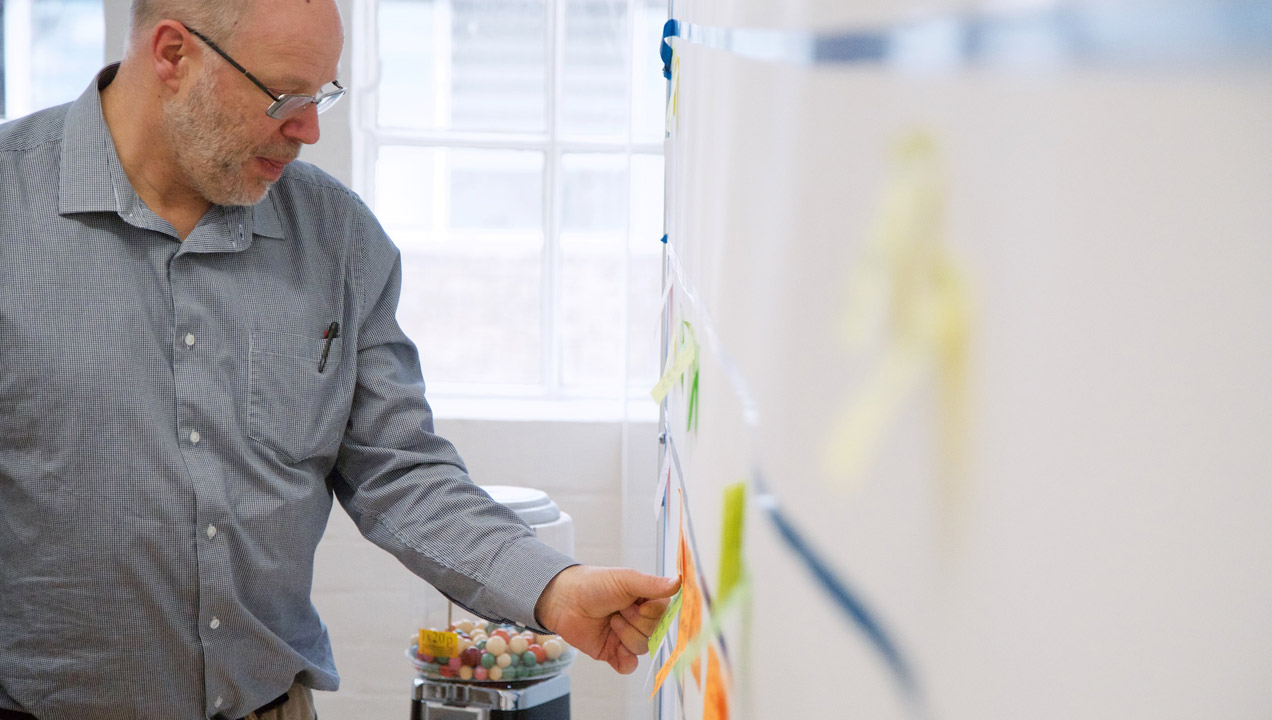A Wine Pairing List For Design Thinking
A recent study at Mississippi State University revealed that drunk people are better at creative problem solving than their sober compatriots. In testing, a cocktail-free control group not only gave fewer correct answers, they also took longer to arrive at their wrong answers. We all know that alcohol impairs our mental faculties, but it also strips away inhibitions, and it seems that being willing to shout out the wrong answer is more valuable in a creative context than raw processing power.
Tragically, it isn’t socially acceptable or healthy for us to show up to work drunk, and we obviously aren’t recommending that every brainstorming session should take place in a bar. The negative impact of alcohol on the cognitive process may be balanced by the improvements to creativity in certain exercises but for the most part being drunk just isn’t worthwhile.
Having said that, we do use techniques in our regular practice intended to offer some of the same benefits as a few shots of tequila without the risks of hangovers or accidentally insulting somebody.
A fruity rosé pairs well with aha moments.
The biggest benefit of booze seems to be an increased number of “Aha!” moments, when concepts suddenly clicked for the participants. These moments frequently arise through intuitive leaps, when the irrational parts of our brain that are set loose by alcohol take control. Other studies into the effects of alcohol on cognition have discovered exactly the same thing: the loss of focus caused by alcohol means that people are suddenly forced to look at the big picture, since they are too bleary eyed to take in the fine details.
One of the way we can replicate this in the labs, is by using Customer Journey Mapping. By mapping the end-to-end user experience, people break out of their siloed thinking and consider a problem in its entirety instead of just the parts right in front of them.

A dry white pairs well with outside the box thinking.
From a neuroscientific point of view, the drunk brain is more likely to display “spreading activation” where all parts of a person’s memory and thought processes are brought to bear on a problem rather than just the parts that are strictly relevant. This leads to “outside the box” thinking and superior free association. Of course, once you are past the free-form ideation stage, the ability to maintain focus for more than a few seconds at a time becomes vital again.
We use “game-storming” techniques to replicate this effect in our sessions, having participants approach a problem from different angles. For example, using a “design the box” technique to make decisions about important features and other aspects of a vision, or “Bodystorming” to put more colour on a problem and help work through it, or a mood board to convey the “feeling” of a solution.
A full-bodied red pairs well with collaborative sessions.
Before we begin a collaborative session, whether within the labs or in the context of a visit to a client, we try to foster an environment where people are not only comfortable chatting freely without the risk of embarrassment but also encouraged to push past the mental silo of their role within their organisation.
Icebreaker activities might be dreaded by anyone who has ever attended a professional conference but once you are past that initial barrier of embarrassment it becomes a lot easier to talk freely. Forcing people to confront that embarrassment up front saves a lot of time in the long run.
It is strange to think that so much of the creative process is restrained by our sober and rational mind, or that the majority of the knowledge that we keep in our memories is locked away behind our own inhibitions.
For this you can use improv activities to help break down these social barriers, little word games where the goal is just to provide an answer quickly, regardless of whether it is right or even sensible. That mindset of “no wrong answers” is more valuable to the process than any amount of sober clarity.
A rich port pairs well with conclusions.
The exercises that we conduct during a creative session are specifically intended to fulfil a similar function to a Martini. Engaging “spreading activation” and getting participants to bring in their knowledge of the world from outside their roles.
It is strange to think that so much of the creative process is restrained by our sober and rational mind, or that the majority of the knowledge that we keep in our memories is locked away behind our own inhibitions, but here at the labs, the complexities of the thought process are just another small aspect of the work that we have to take into consideration.
